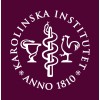Tactile Massage in Type 2 Diabetes
Primary Purpose
Type 2 Diabetes
Status
Completed
Phase
Phase 3
Locations
Sweden
Study Type
Interventional
Intervention
Tactile massage
Relaxation
Sponsored by

About this trial
This is an interventional treatment trial for Type 2 Diabetes
Eligibility Criteria
Inclusion Criteria:
- Type 2 diabetes
- 35-75 years
- BMI 25-30, HbA1c (Swedish standard)
- Oral antidiabetic treatment
Exclusion Criteria:
- Heart failure
- Renal failure
- Insufficient knowledge in Swedish
Sites / Locations
- Center for Family and Community Medicin, KI
Arms of the Study
Arm 1
Arm 2
Arm Type
Experimental
Experimental
Arm Label
Tactile massage
Relaxation
Arm Description
A gentle form of massage given once a week for three weeks
Relaxation (by the use of a CD with relaxation exercises used at least once a week for 10 weeks)
Outcomes
Primary Outcome Measures
HbA1c
Secondary Outcome Measures
Quality of life by SF-36
Full Information
NCT ID
NCT00960674
First Posted
July 24, 2009
Last Updated
April 17, 2013
Sponsor
Karolinska Institutet
Collaborators
Region Stockholm
1. Study Identification
Unique Protocol Identification Number
NCT00960674
Brief Title
Tactile Massage in Type 2 Diabetes
Official Title
Effects on Type 2 Diabetes by Tactile Massage Compared to Relaxation With Relaxation Tape
Study Type
Interventional
2. Study Status
Record Verification Date
April 2013
Overall Recruitment Status
Completed
Study Start Date
August 2007 (undefined)
Primary Completion Date
September 2008 (Actual)
Study Completion Date
December 2008 (Actual)
3. Sponsor/Collaborators
Responsible Party, by Official Title
Principal Investigator
Name of the Sponsor
Karolinska Institutet
Collaborators
Region Stockholm
4. Oversight
Data Monitoring Committee
No
5. Study Description
Brief Summary
Tactile massage is a gentle form of massage that probably exerts its effect through relaxation. In a pilot study of 11 subjects an effect on HbA1c of 0.8%-units was seen.
The study aimed at comparing the effect of tactile massage sessions for one hour given once a week for 10 weeks in comparison with relaxation through a relaxation CD performed once a week during 10 weeks. Primary outcome was HbA1c measured after completed intervention and after yet another 12 weeks. Secondary outcomes were quality of life by SF-36, other markers of metabolism (fasting glucose, insulin resistance by HOMA-model), inflammation (CRP, cytokines) and stress (cortisone, catecholamines).
Detailed Description
Effects of different relaxation techniques on metabolic control in type 2 diabetes have been described. A pilot study indicated an effect by tactile massage, a Swedish form of gentle massage given in sessions of around one hours and including treatment of the whole body in general, on metabolic control measured as HbA1c and on plasma corticosteroids.
The present study aimed at studying the effects in a randomized controlled study, with patients provided with a relaxation cd available at pharmacies in Sweden. Power calculations found that 20-25 subjects in each group would be sufficient to show effect on HbA1c (0.8% vs 0.3%), but that 45-50 subjects would be needed to show clinical relevant effect on quality of life.
Patients aged 35-75 years with type 2 diabetes and BMI 25-30 and HbA1c 6-8%-units (Swedish standard, corresponding to 7-9%-units in DCCT standard) from primary health care centres in Stockholm County were invited to participate, and was randomly assigned to tactile massage or relaxation groups.
Exclusion criteria was heart or renal failure, treatment with insulin, problems with Swedish language. Besides, only subjects of Swedish ethnicity were included in this first study, in order to refine results and avoid confusional results.
Examination with laboratory tests, body examination and questionnaire, including SF-36 and questions on smoking, dietary and physical activity habits, was performed before intervention, after the 10 weeks examination and after yet another 12 weeks. Urine sampling on catecholamines and corticosteroids was performed, and blood tests on HbA1c, fasting glucose, insulin, CRP, cytokines (TNF-alpha, IL-6), adiponectin, leptin, ghrelin.
6. Conditions and Keywords
Primary Disease or Condition Being Studied in the Trial, or the Focus of the Study
Type 2 Diabetes
7. Study Design
Primary Purpose
Treatment
Study Phase
Phase 3
Interventional Study Model
Parallel Assignment
Masking
None (Open Label)
Allocation
Randomized
Enrollment
53 (Actual)
8. Arms, Groups, and Interventions
Arm Title
Tactile massage
Arm Type
Experimental
Arm Description
A gentle form of massage given once a week for three weeks
Arm Title
Relaxation
Arm Type
Experimental
Arm Description
Relaxation (by the use of a CD with relaxation exercises used at least once a week for 10 weeks)
Intervention Type
Procedure
Intervention Name(s)
Tactile massage
Other Intervention Name(s)
Relaxation
Intervention Description
Gentle massage given for one hour by specially educated massage therapists, usually registered nurses.
Intervention Type
Behavioral
Intervention Name(s)
Relaxation
Intervention Description
Relaxation by a CD with relaxation exercises, at least one hour per week for ten weeks
Primary Outcome Measure Information:
Title
HbA1c
Time Frame
2008
Secondary Outcome Measure Information:
Title
Quality of life by SF-36
Time Frame
2008
10. Eligibility
Sex
All
Minimum Age & Unit of Time
35 Years
Maximum Age & Unit of Time
75 Years
Accepts Healthy Volunteers
No
Eligibility Criteria
Inclusion Criteria:
Type 2 diabetes
35-75 years
BMI 25-30, HbA1c (Swedish standard)
Oral antidiabetic treatment
Exclusion Criteria:
Heart failure
Renal failure
Insufficient knowledge in Swedish
Overall Study Officials:
First Name & Middle Initial & Last Name & Degree
Per E Wändell, MD, PhD
Organizational Affiliation
Karolinska Institutet
Official's Role
Principal Investigator
Facility Information:
Facility Name
Center for Family and Community Medicin, KI
City
Huddinge
ZIP/Postal Code
SE-14183
Country
Sweden
12. IPD Sharing Statement
Learn more about this trial

Tactile Massage in Type 2 Diabetes
We'll reach out to this number within 24 hrs